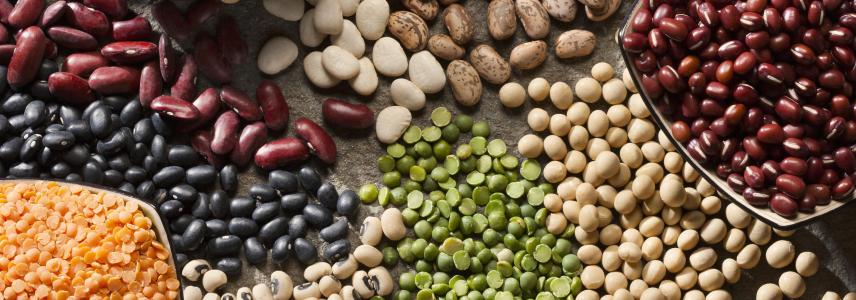Free-from foods: the potential for grains, pulses and oilseeds

Free-from foods are becoming more common. So, traders and producers of grains, pulses and oilseeds have many opportunities because of the rising demand for alternative ingredients. This is due to changing food patterns and consumer preferences, such as the trend to lower sugar, dairy or palm oil intake.
What are free-from foods?
Free-from foods are products made without specific ingredients. Products free from gluten, eggs, lactose, nuts, dairy, soy or sugar, for example. These, and many other free-from foods, are increasing in popularity. And that means new opportunities for traders and producers of potential alternative ingredients, including pulses and seeds.
Why do consumers choose free-from foods?
Free-from foods are becoming more popular for many reasons. For example, consumers prefer not to eat certain ingredients, such as palm oil or meat, because they might have concerns about the following:
- Deforestation;
- Human rights violations;
- Greenhouse gas emissions; or
- Animal cruelty.
Other consumers choose free-from foods because these foods are suitable for those:
- who have specific allergies or intolerances; and
-
who want to cut out certain ingredients from their diets for other health reasons.
Alternatives
The increasing number of plant-based alternatives on the market also boosts the free-from food trend. These alternatives create further opportunities for traders. Some alternatives include:
- Plant- or nut-based alternatives to replace butter and the milk in dairy-free ice cream;
- Rapeseed or linseed oils to replace palm oil;
- Soy milk or almond milk to replace cow's milk in coffee; and
- Protein-rich foods such as tofu, oilseeds and pulses to replace meat and fish.
The availability of free-from foods
The range of free-from foods continues to grow as consumer demand rises. An increasing number of food products now have free-from food alternatives, including bread, peanut butter, beer, chocolates, cakes, and milk. Nowadays, many supermarkets have dedicated aisles for free-from food products. And food labels provide information about food allergens but now also often specify the absence of certain ingredients — 100% palm oil-free butter, peanut butter or chocolate paste, for example.
Growing markets
Data supports the growing popularity of free-from foods. For example, the expectation is that the global gluten-free food market will grow by an annual 9.5% between 2021 and 2027. This growth is partially due to an increasing number of people with coeliac disease or other diseases that might result from an unhealthy lifestyle. Next, research shows that consumers globally are more aware of lactose intolerance and demand less added sugar in products. This further boosts the lactose-free market, with a projected annual growth of more than 12% between 2022 and 2029.
Improved flavours
Food manufacturers and producers are becoming more aware of consumers' changing dietary requirements and preferences. As a result, they are creating more options for food-conscious consumers. For example, food and plant scientists are cultivating pulses and beans with optimal flavour and functionality for the European market. Traders in pulses and seeds can tap into these trends by marketing their products to food producers and consumers as perfect alternative ingredients.
Projects and platforms
A growing number of initiatives help consumers to make choices that align with their preferences and concerns. Some initiatives include:
- The Ethical Consumers platform's list of palm oil-free products;
- The Goodness Project's vegan free-from marketplace; and
- The Celiac Disease Foundation's lists of gluten-free candy and gluten-free foods that include many grains.
Learn more
- For more information, read CBI’s trends study on the European grains, pulses and oilseeds market.
- Study CBI's buyer requirements for grains, pulses and oilseeds to plan your entry into the EU market.
- Look back on the 10th anniversary of the Free From Food & Health Ingredients 2022 expo in Amsterdam last November. If you did not attend, check out the exhibitor list to find potential buyers.
Profundo wrote this news article for CBI.
Stay informed
To stay informed on the latest developments in the grains, pulses and oilseeds sector, subscribe to our newsletter.